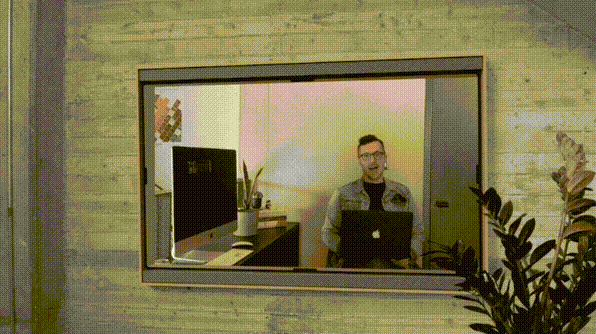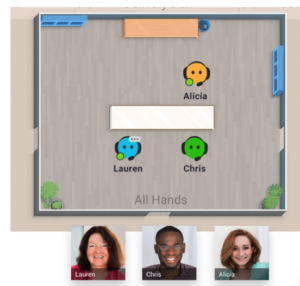Fixing the “you’re on mute” problem and other workplace issues with fun, easy-to-use technology.
In 1918, the world was beset by a pandemic that would claim the lives of approximately 500 million people. The ‘Spanish Flu’ was initially downplayed by governments and media outlets alike (except in Spain, which is how it got its name). Citizens mostly continued about their days and this ‘head-in-the-sand’ mentality cost many their lives.
In fairness, in 1918 people likely acted as if life was ‘business as usual’ because they didn’t have much choice. They couldn’t do their work from home, meeting with colleagues through video calls and collaborating through screen shares. And they didn’t have access to the wide range of information that we do today.
Modern technology can be taken for granted these days, so it’s worth taking the time to look back on some of the devices that made 2020 a little more bearable and could be useful in 2021 as we try to reclaim some sense of normalcy.
HRM does not endorse any of these products, but we did think it was worthwhile to round up the fun, interesting and mind-boggling innovations that might soon find their way into a workplace near you.
Looking for more post pandemic resources? Head to AHRI’s COVID-19 Hub.
Video conferencing
When Apple announced that Zoom was the iPad app of the year, no one was surprised. Zoom made its way into our workplace lexicon in 2020 in a similar way that Google did in the early 2000s (officially becoming a verb in 2006).
Video conferencing did bring a new sense of fun to some meetings. Virtual backgrounds and filters found their way into even the most serious video conferences – remember the woman who accidentally turned herself into a potato for an entire call?

Image: Business Insider
For those stuck working at home with housemates, children or family members, background noise became a real problem. While the mute button is a handy fix, hearing “you’re on mute” for the hundredth-thousand time can send employees a little mad.
Rather than putting yourself on and off mute for the duration of a video call, why not look for tech-based solutions? An app called Krisp filters out background noise, from chatter to construction work. Not only does the app dampen your background noise, but also that of the r people on the call, so no one should need to mute themselves again.
Beyond intrusive noises, video calls present another issue. Video call fatigue became a common phenomenon this year and, as we head into 2021, the thought of slogging through hundreds of hours of video conference meetings, webinars and training sessions is enough to send you into a premature spiral of dread.
One US startup hopes to combat this with an app called Voodle. This Tik-Tok style platform encourages users to record short videos to camera. The creators believe Voodle could replace long presentations or training videos as the clips come with AI created captions and are searchable by topic within your organisation’s channel. Of course, not all employees would be comfortable recording selfie-styles videos to communicate with colleagues, so there is the possibility the app would just become dominated by the more extroverted workers in your organisation.
It’s very like video calls will remain a workplace staple as many employees have said they prefer a combination of remote and in-office working. To keep workers connected in this hybrid workplace, design firm Argodesign has created an artificial window called the Square.

Image: Agrodesign
The Square is essentially a television screen that contains four small cameras. It creates a 3D effect, giving the impression you’re looking through a window rather than watching your colleagues on a screen. Employees can leave the window open all day to replicate the feeling of sitting next to each other or close the artificial ‘blind’ when they want some privacy (or turn the screen off, of course).
While exciting, the Square is a much less feasible product than the others on this list. Are employers going to pay thousands of dollars to install camera-TVs in employees homes? Probably not, but after a year like 2020 who knows what the future holds.
Mental health and wellbeing
The silver lining in the dark cloud that has been 2020 is a renewed focus on mental health in the workplace. The Productivity Commission’s 2020 inquiry into mental health found creating psychologically safe workplaces was a vital step towards combating Australia’s $220 billion mental health crisis.
For many employers, Employee Assistance Programs (EAP) have become a particularly important asset to assist workers. However, with lockdowns restricting face-to-face sessions organisations had to ensure employees would be able to connect to counselling services remotely.
EAP start-up Uprise focuses on providing mental health care through an app. Employees can undergo internet-delivered cognitive behaviour therapy (CBT) to help them build their skills to cope with stress and burnout.
Currently the service works in tandem with a human coach who will call the employee to check in, but the developers hope in time that check-in services could be provided through an artificial intelligence (AI) platform.
If you’re looking to jump straight into robot-provided therapy, Woebot already uses AI CBT. Woebot is a chat service that delivers information based on cognitive behaviour principles with the ultimate aim to change how you think. Importantly, the creators of Woebot are quick to stress that the program should be used in conjunction with traditional therapy methods.
Virtual reality and artificial intelligence
HR professionals are no strangers to AI. It has been used in recruitment for years, with mixed results.However, moving forward, we can expect AI to be incorporated into more areas of the workplace, such as in the training and development space.
Virtual reality company Talespin has created a program aimed at helping HR to develop essential skills by communicating with artificially intelligent avatars in virtual reality. One such avatar is Barry whose sole purpose is to be fired by the user. Barry is a highly emotional character who will react with despair, anger or aggression towards the news of his termination, which the user will need to manage.
According to Talespin, VR training has a couple of benefits over in person role playing. Firstly, users can repeat the program as many times as they need without tiring their instructor or role play partner. Secondly, users are less likely to feel embarrassed or afraid of making mistakes as their virtual partner will not judge them (unless the creators choose to program that emotion in).
Talespin is not the only player in the VR training game. English company Virti was named one of Time magazine’s best inventions of 2020 for its program training health care providers.
Some organisations, such as global HR firm Remote, have taken it one step further by using VR headsets to recreate the feeling of being in an office.
Earlier this year HRM spoke to James Parnwell, managing director of internet marketing organisation TheOnlineCo, who gave us a tour of their virtual office through the app Sococo. In Parnwell’s “office” employees are represented by coloured circles. Team members sit together at illustrated desks and are able to speak to each other through the program. You can even knock on employees doors before interrupting them.

Image: Sococo
This year has been hard, but the innovative nature of humans is near impossible to stop. Technology will continue to evolve and the workplace will never be immune to its influences.
If you’ve found a piece of technology that has been particularly useful to you this year we’d love to hear about it in the comment section below.


It’s good to see that even when things aren’t moving things are still moving.